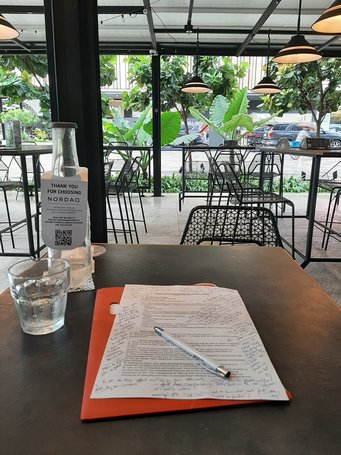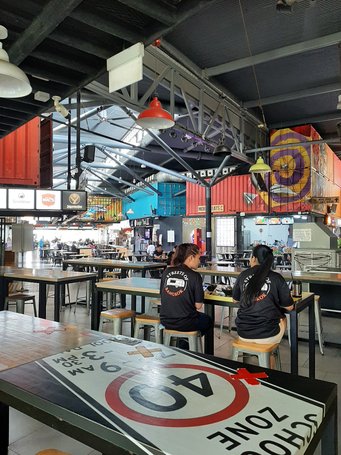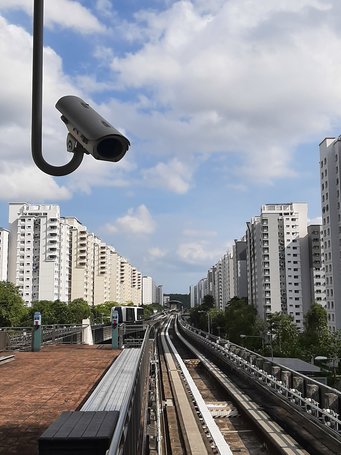How COVID-19 changed migration (research): Constrained research practices, constrained migrant subjects
by Helena Hof
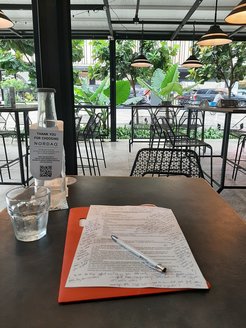
After nearly two years of border restrictions due to the COVID-19 pandemic, Southeast Asian states started to relax their pandemic-induced immigration measures by the end of 2021. My new BMBF-funded research project on foreign entrepreneurs in Singapore’s and Tokyo’s knowledge-intensive startup sectors (quamafa.de) has been on the way for nine months but neither of the two countries Singapore and Japan had been accessible for foreign researchers without permanent residence. When Singapore finally announced its opening, I seized the opportunity. Two years of life in a pandemic and eight years of observing social developments in the Southeast Asian hub and city-state have made me very curious about this trip: What has changed since my previous, pre-pandemic visits, how has the border closure affected adverse sentiments towards (im)migrants, which have been increasing gradually for years? This post is a reflection on fieldwork in migration research during a global pandemic. At the same time, it considers the way migration itself has changed amidst these circumstances, which in the case of the two field sites Singapore and Tokyo accentuates the artificial divide between different ‘classes’ of migrants, but, as I argue, also urges us to recognize a shift in attributes that sort migrants into those deemed desired and those deemed not.
Planning fieldwork in one of the possibly strictest countries during the pandemic seemed daunting at first. Yet, once in the field, the stay turned out to be refreshingly busy and consisted of surprisingly ‘normal’ one-on-one interviews, spontaneous ethnographic observations, and casual introductions to unexpected research sites. While colleagues from the joint project had to settle for online interviews in Japan, albeit physically in the field (Tokyo), interlocutors in Singapore were open to meet in person. One stark difference to pre-pandemic times however was that events were held almost entirely online. Since the entrepreneurial scene is all about networking this was a pity and did not allow me to immerse myself as deeply as I had hoped in the different entrepreneurial communities in Singapore.
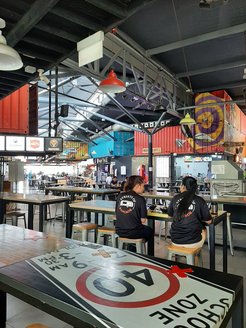
At the same time, the need to include online research in the study even while in the field tremendously increased access to a transnational entrepreneurial network, and ultimately shaped the focus of the project. To give an example, startups in Singapore mainly focus on the Southeast Asian rather than the domestic market. Once I had met well-connected people of the Singaporean startup scene I found out about social media platforms as well as government initiatives for entrepreneurs that one year of preliminary desktop research had not been able to identify. The constraints of the pandemic have thus, despite considerable difficulties, pushed me to more flexibly combine methods and approaches. Such methodological openness and willingness to train oneself in new and digital methods are likely to become ever more important, as the ongoing pandemic and the rise of security issues, including the war in Ukraine, forcefully underline.
The pandemic has changed not only the way we communicate, we work and what it is that we take for granted. It has changed academic research practice as it has changed the daily lives of those we research, especially in the field of migration, diversity and mobility studies, since our research subjects do not enjoy equal rights given their citizenship, ethnicity or visa status in their country of residence. Several blogs in this series have commented on the heightened salience of these and other categories of difference in extraordinary times such as those of a pandemic. Steven Vertovec advanced the idea of the “Singapore future” in early 2020: An authoritarian state with tight migration surveillance that allows the government to reap the fruits of migrant labour without having to grant these migrants even basic rights. Two years later we have to ascertain that developments might have even exceeded our pre-pandemic assumptions. The situation of Singapore’s strictly controlled low-wage migrant workers who, at the onset of the pandemic, have been locked into their packed dormitories neither allowed to work nor to socialize freely in public space, seems to have improved only slowly and fragmentarily (Amrith 2020; Yihang). However, on the other side of the categorical ‘skill-and-rights’ spectrum of migrant labour, the so-called global talents, Singapore’s highly-skilled migrants whose work visa, the Employment Pass, used to been known for granting considerable rights, experienced significant constraints on their mobility, too.
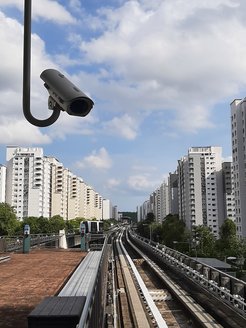
Singapore is a case in point of a bifurcated migration regime (Yeoh 2006), and insights from Singaporean scholars suggest that the pandemic has fortified this unhealthy divide rather than help to reduce it (Ye 2021). That said, my previous research on highly-educated migrants in Singapore, who lack the financial backing of conventional expatriate contracts, revealed significant diversity within the heterogeneous group of ‘privileged’ or ‘highly-skilled’ migrants (Hof 2020). The pandemic underlines the need to examine how migration management not only differs between the two dichotomous groups of desired (read: high-wage/global talents) and surveilled (read: low-wage/presumably low-skilled) migrants but also within these groups. While the debate used to refer to these two contested categories a shift towards legal security – and thus a differentiation between more permanent / legally secure and temporary / precarious migrations needs to be acknowledged.
My new research, too, sheds light on the immobility – as well as creative adjustment – of those often deemed to be frictionlessly mobile. In the light of Japan’s and Singapore’s attempts to attract and retain entrepreneurs in innovative sectors the project “Foreign Entrepreneurs in Tokyo's and Singapore's knowledge-intensive start-up sector” examines the human side of these entrepreneurs’ presence in the host cities and their involvement in local businesses and communities. It sketches a picture of foreign entrepreneurs’ involvement in the emergence of an entrepreneurial ecosystem in the two cities and explores the relation between the diversification of businesses and that of society, as well as the potential of fruitful synergies between the two. The foreign entrepreneurs in Singapore, all university-educated people with expertise in sectors such as high-tech or finance, have certainly suffered from the limited networking activities of the startup community since the pandemic. This applies to Singaporean entrepreneurs, too, but the latter have access to a far wider range of government funding schemes as well as family and kin to support them mentally, financially, and by way of offering information, office space, and even accommodation when businesses stagnate. Such challenges double when foreigners on work visa cannot visit their families overseas nor can their family members enter the country. Both Singapore and Japan rejected visa or travel applications by partners or children of migrants, including my interlocutors. For considerable time, even permanent residents were included in this group. While they have enjoyed more rights recently and with progress in the management of the pandemic, also thanks to Singapore’s rather successful vaccination rollout, work visa holders have increasingly come to see themselves as “third-class citizens”, as the following examples from my field research evidence.
Some of my interlocutors from Asian countries have meanwhile been able to visit their natal families in their home countries. Others were affected more severely, especially those from European countries where infection cases remained relatively high and the mobility of tourists to Singapore had been discontinued. For instance, a French woman in her fifties, who has lived in Singapore for close to twenty years, is a typical case of the differentiation within the group of the global talents. She exemplifies the fact that not everyone entering with an expatriate contract can be classified as high-wage or privileged: While she came to Singapore under privileged conditions, her husband enjoying an expatriate contract at that time, the couple’s situation – as well as that of their son – has become precarious over the years. The couple decided to stay after the termination of the expatriate assignment. Her husband has changed jobs several times since, every time struggling more severely to find new employment given his age. Things became easier in 2010, when the couple obtained permanent residence. This allowed my interlocutor to venture into her own professional photography services business for which she would not have been able to obtain a work visa.
However, their 17-year-old son, who finished secondary education in France at the time the pandemic struck, was not allowed to return to Singapore. Although he had lived in the country for most of his life, the fact that he did not have a valid residence permit at the time he finished school in Europe, meant that he could not visit his parents. With education completed, and yet no job or income in France, and no right to return to the place of his childhood and his family, my interlocutor’s son is one of many cases of those who lack legal security. Regardless of their own or their family’s professional qualifications, jobs or income, they are denied such basic human rights as joining their families. The residence permit once and again has become a primary identifier for and differentiator of people’s rights, at least during pandemic times.
The situation in Singapore is not exceptional. The second field site of my study, Japan, took more than two years of strict pandemic border measures and almost no mobility into the country until it considered allowing family members of foreign residents to enter Japan. The country has seen increasing immigration and a gradual move towards becoming a more inclusive society in recent decades. Now, however, it seems to have lost much of what it has won. After its 200-year period of little communication with the outside world in the 18th and 19th century, followed by expansionist activities in (South)East Asia and its World War II aggression, Japan has become recognised as an immigrant country given the upsurge in numbers of new migrants in recent years and their diversifying positions in Japanese society (Liu-Farrer 2020). At the same time, recent policies – backed or at least not criticized by society – seem to signal a considerable step backwards towards an insular ethno-nationalist mindset.
Examples like the ones of Singapore and Japan are unsettling and urge us to critically assess both the idea of skilled migrants as privileged and the reinforcement, or return, to migration government as the governance of labour rather than humans. As so many times before, insecurity and fears within society help governments justify the exclusion of those who can easily be classified as outsiders. In an age of border closures, ‘migrant classes’ become both reinforced and blurred – the pandemic reminds us that despite the rights which those at the upper end of the migrant classes have gradually gained, all non-citizens are still, in the eyes of most governments, second-class citizens.
